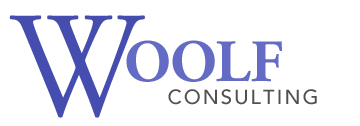 Is Innovation in Your DNA?
Is Innovation in Your DNA?
Are you one of those people who get excited by new ways of doing things? Or do you get frightened and prefer to stick with the tried and true? Does your organization constantly try to look around corners and change things pre-emptively, in anticipation of shifts in market needs or customers’ behavior? Or does it instinctively fall back on the safety and security of formulas, policies and procedures that have been known to work in the past?
Why does innovation matter?
Well, for one thing, it taps into a deep human need for creativity, invention, and self-expression, and it reflects human adaptability and the age-old desire for people to adventure into the unknown.
Innovation is a quality shared by young children who don’t have the benefit of experience, and have to devise inventive workarounds to solve the problems they encounter, and by creative souls, who see things differently from the rest of us, and are moved to do something about it. There are serious benefits to being innovative in a competitive marketplace. Anyone who offers the same old same old will either be forced to reduce their prices or be driven out of business. Nothing stays the same for too long, and organizations that don’t adapt and innovate, literally die.
So what is the role of leadership in innovation?
Some leaders are themselves innovators. Thanks to this characteristic, their enterprises are born. There are those who have the insight to leave to others the growth and management of an organization that emerges, so their innovative ideas become hugely successful as scaled operations. Other leaders have the gift of enabling innovation. The former have the innate talent of originality, creativity and drive, while the latter simply need the will and the temperament to create the conditions for others’ innovative talents to flourish. Even without creative genius, an organization can have a culture of innovation if it allows or encourages new ways of thinking and doing things, and then has the discipline to follow them through. This is a formula that will produce products and services that are not only innovative, but sustainable too, because people who thrive in this kind of environment will be attracted to it, will do their best work, and will stay.
What can we learn from some companies in the news that are known for their capacity to innovate?
Let’s look at Apple’s retail stores. You don’t have to be a techie to sense the energy and enthusiasm when you walk into one of their brightly lit, uncluttered spaces. Who can resist sneaking a try of one of those sleak little products, invitingly sitting on display, just waiting for your fingers to slide across their surface? Who has ever felt pressured into buying something there? Isn’t it more a question of having to hold yourself back and not buying a whole suite of products? And if you’re a bit of a technophobe and have problems with your device, isn’t it so comforting to know that you can just go hang out at the bar and a genius will help you (mostly) solve your problem? Behind the smooth operation that ensures a good customer experience lies a heap of innovations that transform the retail experience.
The physical layout of each store allows customers to have their different needs met (just browse, learn, solve problems, have the kids play). The processes resulting from this innovative view of shopping (welcoming customers, serving not selling, having them pay where they are, and not having to line up at a static cashier, applauding them when they have completed their purchase) are extremely well designed and executed, so don’t mistake innovation for airy fairy creativity – there must be cast-iron discipline behind it to ensure success.
Another example of an innovative company is the public relations agency, GolinHarris, which recently took a look at the titles it awards its people. It discovered that boring old titles like “account executive”, “account supervisor” or “vice president”, were uninformative and uninspiring. By looking deeply at what was important to their clients and what was intrinsic to different people’s roles and contributions to their clients’ success, they came up with innovative role descriptors of particular specialties. This may strike some as gimmicky, but there is more substance than you might think, if you enable your organization to evolve in anticipation of, rather than in response to, clients’ needs.
So my questions to you are:
- How innovative are you as an individual? Are you someone who initiates innovation or who fosters it in others?
- Do you ensure a climate of innovation in your organization, where risk-taking and bold thinking are encouraged?
- Are there innovations that you notice around you that you could adapt for your organization?
Let me know what you try and what results you get.
Fredia Woolf, Founder of Woolf Consulting, writes about career and workplace issues. She coaches leaders on how to reach their people, their goals and their potential, and designs programs for organizations to enhance their effectiveness and the quality of both leadership and teamwork. She can be contacted at fwoolf@woolfconsulting.com.

